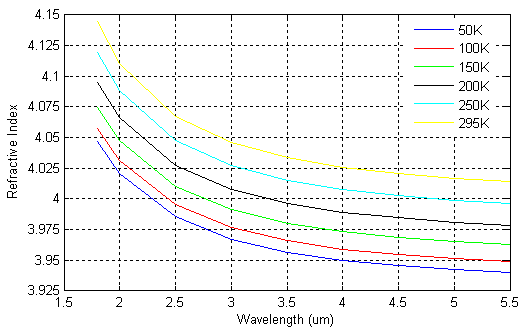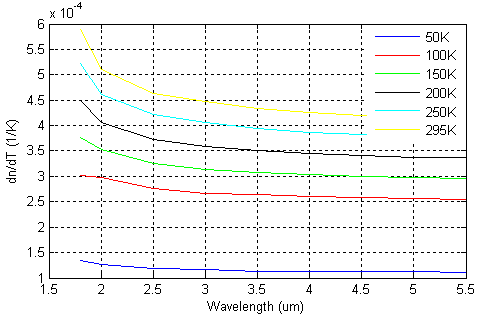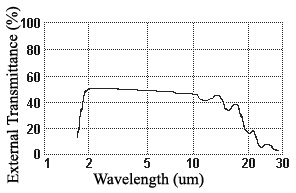|
Germanium is very expensive due to the scarcity of raw material and the complexity of its recovery and refinement. Despite its cost, the unique optical and mechanical properties have made germanium the material of choice for many IR applications, especially for use in the 8um to 12um region.
Optical grade germanium can be of either mono or polycrystalline form. The optical prosperities are slightly different from batch to batch due to dislocations, slip planes and different crystal sizes. Germanium is a semiconductor material that can be either n or p-type. However, the n-type absorption coefficient is much lower making it the choice for IR applications. Although germanium has a very good internal transmittance and thermal conductivity, it is not suitable for a wide range temperature application due to its fairly large temperature dependent refractive index. Figure 1 & 2 show the refractive index and its temperature dependent coefficient as a function of wavelength for selected temperatures.
| |
 |
| |
Figure 1: Refractive index as a function of wavelength for selected temperatures
|
| |
 |
| |
Figure 2: Thermo-optic coefficient (dn/dT) as a function of wavelength for selected temperatures
|
| |
 |
| |
Figure 3: External transmittance curve for germanium.
|
| |
Coefficient of Thermal Expansion
25 °C (/°K) |
6.0X10-6
|
|
| |
Thermal Conductivity (W/m·K) |
60.2
|
|
| |
Melting Point (°C) |
947
|
|
| |
Density (g/cm3) |
5.35 |
|
| |
Young's Modulus (GPa) |
103
|
|
| |
Poisson's Ratio |
0.26
|
|
| |
Shear Modulus (GPa) |
41
|
|
| |
Mohs Hardness |
6
|
|
| |
Table 1:Germanium Thermal and Mechanical Properties
|
|
IR Materials :
|





